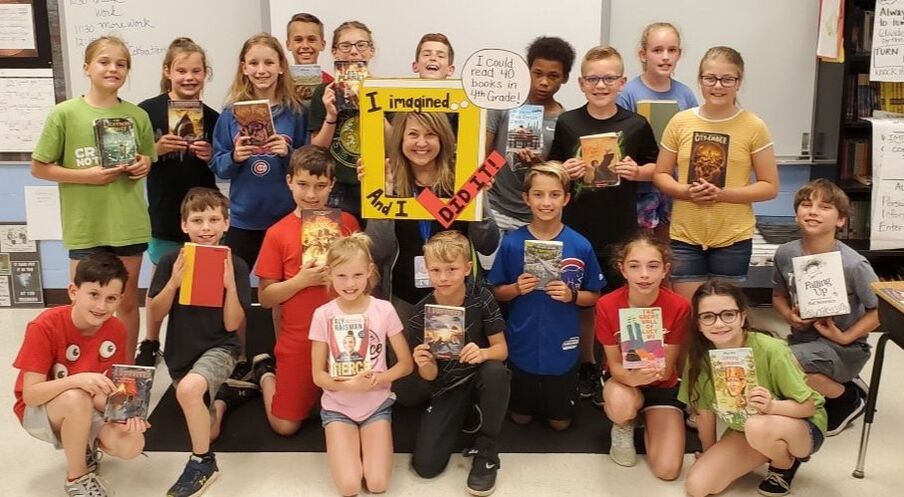The 40 Book Challenge!As an alternative to the traditional reading log, our class participates in The 40 Book Challenge.
Every student is a reader in 4A! Mrs. Goins is doing the challenge, and all families are encouraged to participate as well. Reading accomplishments are celebrated in our classroom, and we'll celebrate our challenge with a big party at the end of the school year. For some extra background information, check out https://bookwhisperer.com/2014/08/12/the-40-book-challenge-revisited/
|
SOME MORE INFORMATION...
These are the words of Donalyn Miller author of The Book Whisperer, and since i can't say it any better, I have copied her words for you here.
Honestly, this challenge isn’t really about reading 40 books. What matters is that students stretch themselves as readers and increase their competence, confidence, and reading motivation through their daily participation in our reading community. The 40 Book Challenge works for my students and me and for the many teachers successfully implementing it because of these core beliefs:
Everybody reads here. Let’s get started. As teachers, our direct influence on students’ reading lives lasts 40 weeks—36 weeks of school and 4 weeks of school vacation. Setting high expectations (roughly a book a week) communicates that reading is ongoing and continues from the first day of school to the last—hopefully longer. Students should spend more time reading than they spend completing reading-related activities like worksheets, reading responses, and projects. Students who read the most will always outperform the students who don’t read much (Krashen, 2004).
*Strong readers have lots of reading experiences. You need to be a good all-around reader. Encouraging students to read widely—sampling books from every genre—improves their reading ability by expanding their reading experiences. If you spend every day working on your jump shot, you’ll improve your jump shot. To be a strong all-around player, you must practice passing, guarding, and dribbling, too. To be a strong reader, you must practice reading poetry, fiction, nonfiction, wordless books, graphic novels, blog posts—a little bit of everything.
*There’s the right book for you out there somewhere. Let’s find it. For many students, trying a lot of books helps them find the one type of text that excites them and invites them into reading. True preferences come from years of wide reading—trying books, having some false starts, discovering authors, genres, and writing styles that we enjoy. Students who haven’t read much may not have found the books that speak to them. Reading buffet-style—tasting all types of books—students can discover what the world of reading has to offer.
*Whether you read or not isn’t a choice, but what you read is YOUR choice. I don’t waste a lot of time at the beginning of the school year talking about why students might not like to read. Everybody reads here. Everybody is a reader. Whether you read or not is off the table, but what you read is your choice. Whatever you want, YOU PICK. Providing students with choice in what they read increases their reading motivation and engagement (Gambrell, Coding, & Palmer, 1996; Worthy & McKool, 1996; Guthrie & Wigfield, 2000).
*Your reading life matters. Students’ personal reading goals have as much value as our academic goals. Classrooms exert tremendous influence on the development of students’ reading identities—whether it’s positive or negative. While students learn the skills of reading, they must develop a positive reading identity to remain readers (Serafini, 2013).
Without these core beliefs in place, the 40 Book Challenge becomes another tedious reading assignment that drives kids away from reading. If students leave our classrooms hating to read or skate through without any positive reading experiences, we have failed. It doesn’t matter what they scored on the reading test. It doesn’t matter how many books they read if they stop reading when they leave our classrooms.

